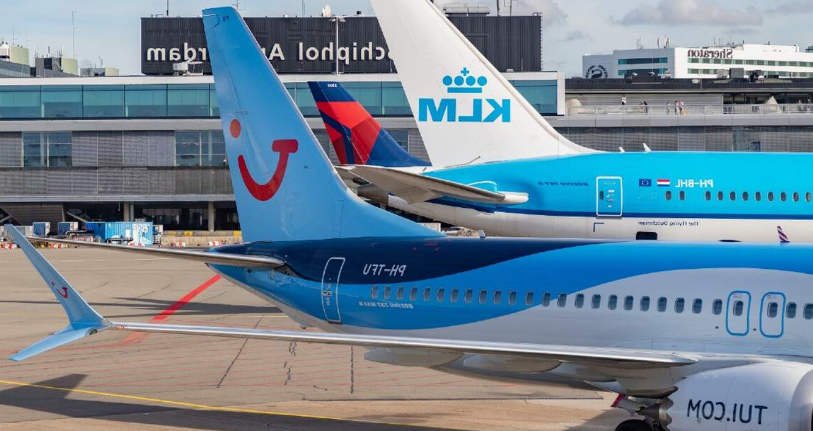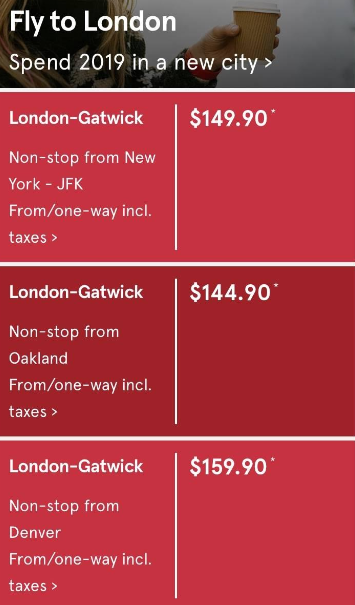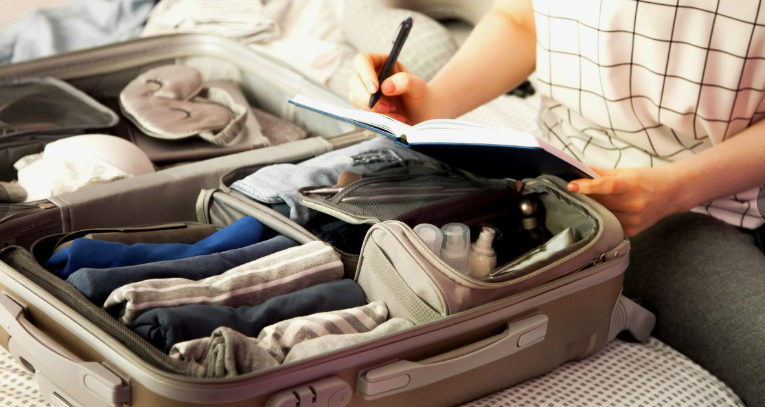
Table of Contents
Flying to Europe Tips Traveling to Europe can be an exciting adventure, but long-haul flights come with their own set of challenges. Whether you’re a seasoned traveler or a first-timer, here are some practical tips to help ensure your journey is as smooth and enjoyable as possible.
A. Brief Overview of the Topic:
Essential tips for flying to Europe for the first time Flying to Europe can be an exciting and enriching experience, offering the opportunity to explore diverse cultures, historic landmarks, and breathtaking landscapes. Whether it’s your first time or you’re a seasoned traveler, embarking on a journey to Europe requires careful planning and preparation to ensure a smooth and enjoyable trip.
B. Importance of Planning and Tips for Flying to Europe:
Planning is essential when it comes to flying to Europe. It’s not just about booking tickets and packing your bags; it involves considering various factors such as airline options, visa requirements, local customs, and transportation logistics. By investing time and effort into planning your trip beforehand, you can minimize stress, avoid potential pitfalls, and make the most of your time abroad.
Here are some key tips to consider when flying to Europe tips :

Comprehensive guide to flying to Europe with tips for a smooth journey : Different airlines offer varying levels of comfort, amenities, and pricing. Researching airlines thoroughly can help you find the best deals and ensure a pleasant flying experience.
- Booking Tickets Well in Advance: Booking your flights well in advance can often result in lower fares and better seat options. Keep an eye out for promotions and discounts offered by airlines or travel agencies.
- Checking Passport Validity and Visa Requirements: Make sure your passport is valid for at least six months beyond your planned stay in Europe. Research visa requirements for your destination country and apply for any necessary visas well ahead of your departure date.
- Packing Essentials and Considering Luggage Restrictions: Pack light, but don’t forget essential items such as travel documents, medication, comfortable clothing, and chargers. Be mindful of luggage restrictions imposed by airlines to avoid extra fees or delays at the airport.
- Choosing the Right Airport: Consider factors such as proximity to your destination, layover durations, and airport amenities when selecting airports for your flights. Opting for airports with shorter layovers or convenient transportation options can help streamline your journey.
- Familiarizing Yourself with Local Customs and Etiquette: Researching the cultural norms and etiquette of your destination can help you navigate social interactions and avoid unintentional faux pas. Learn basic phrases in the local language to facilitate communication and show respect for the local culture.
- Ensuring Safety and Security: Prioritize your safety by staying informed about potential risks and taking necessary precautions. Keep your belongings secure, be vigilant in crowded areas, and familiarize yourself with emergency procedures.
In summary, proper planning is key to a successful trip to Europe tips. By following these tips and taking proactive steps to prepare for your journey, you can set yourself up for an unforgettable travel experience filled with adventure, discovery, and lifelong memories.
Essential tips for planning your first flight to Europe
Planning your first flight to Europe can be exciting and a bit daunting. Here are some essential tips to ensure a smooth and enjoyable trip:
A. Researching and Choosing the Right Airline:
Researching and selecting the right airline is crucial for a comfortable and hassle-free journey to Europe. Consider the following factors when choosing an airline:
- Comfort and Amenities: Look for airlines that offer comfortable seating, ample legroom, and in-flight entertainment options to make your journey more enjoyable.
- Safety Record: Prioritize airlines with a good safety track record and positive customer reviews to ensure a secure and reliable flight experience.
- Route Network: Choose an airline with a wide route network and convenient connections to your destination in Europe to minimize layovers and travel time.
- Cost and Value: Compare ticket prices and consider additional fees for services such as baggage allowance, seat selection, and onboard meals to determine the overall value of your ticket.
- Frequent Flyer Programs: If you’re a frequent traveler, consider joining a loyalty program offered by the airline to earn rewards, upgrades, and other benefits.
B. Booking Tickets Well in Advance:
Booking your tickets well in advance is essential to secure the best deals and availability for your desired travel dates. Consider the following tips when booking your flights to Europe:
- Flexibility: Be flexible with your travel dates and departure times to take advantage of lower fares and special promotions.
- Comparison Shopping: Use online travel agencies, airline websites, and flight comparison platforms to compare prices and find the best deals on airfare.
- Set Price Alerts: Sign up for price alerts or notifications to track fluctuations in ticket prices and book your flights when prices drop.
- Consider Alternative Airports: Explore the possibility of flying into alternative airports near your destination to potentially find cheaper fares or more convenient connections.
C. Checking Passport Validity and Visa Requirements:
Before traveling to Europe, ensure that your passport meets the following requirements:
- Validity: Check the expiration date of your passport to ensure it remains valid for at least six months beyond your planned stay in Europe.
- Blank Pages: Make sure your passport has enough blank pages for entry and exit stamps.
- Visa Requirements: Research the visa requirements for your destination country in Europe and apply for a visa if necessary. Some countries may allow visa-free entry for short stays, while others require a visa in advance.
D. Packing Essentials and Considering Luggage Restrictions:
Packing efficiently and adhering to luggage restrictions can help streamline your journey and avoid unnecessary hassle at the airport. Consider the following tips when packing for your trip to Europe:
- Travel Documents: Pack essential travel documents such as your passport, visa (if required), travel insurance, and itinerary in a secure and easily accessible location.
- Clothing: Pack versatile clothing suitable for the climate and activities you plan to engage in during your trip. Opt for lightweight, wrinkle-resistant fabrics and layers that can be easily mixed and matched.
- Toiletries and Medications: Pack travel-sized toiletries and essential medications in compliance with airline regulations. Consider carrying prescription medications in their original packaging with a copy of the prescription for customs clearance.
- Luggage Restrictions: Familiarize yourself with the luggage restrictions imposed by your airline, including weight limits, dimensions, and restrictions on liquids, gels, and aerosols in carry-on luggage. Pack accordingly to avoid additional fees or delays at the airport.
By thoroughly preparing for your flight to Europe and taking proactive steps to research, book, and pack for your journey, you can ensure a smooth and enjoyable travel experience from start to finish.
How to choose the best airline for a European vacation
A. Considering Proximity and Accessibility to Your Destination:
When selecting an airport for your journey to Europe, consider its proximity and accessibility to your final destination. Choose an airport that offers convenient transportation options, such as trains, buses, or taxis, to reach your intended destination efficiently. Additionally, factor in the distance and travel time from the airport to your accommodation to minimize transit-related stress and delays.
B. Comparing Prices and Layover Durations:
Compare prices and layover durations when choosing between different airports for your flight to Europe. While airports with longer layovers may offer cheaper fares, consider the additional time and inconvenience involved. Evaluate the overall value of your ticket by considering factors such as layover duration, ticket price, and the convenience of connecting flights.
C. Evaluating Airport Amenities and Services:
Research the amenities and services offered by airports to enhance your travel experience. Look for airports with facilities such as lounges, restaurants, shopping outlets, and free Wi-Fi to make your layovers more comfortable and enjoyable. Additionally, consider airport infrastructure and cleanliness when evaluating airport options to ensure a pleasant arrival and departure experience.
Packing essentials and luggage restrictions for a trip to Europe

Packing for a trip to Europe can be exciting yet a bit overwhelming due to different countries having varied climates, cultural norms, and luggage restrictions. Here’s a guide to help you pack efficiently and navigate common luggage restrictions:
A. Packing Light and Smart:
- Choose Versatile Clothing: Pack clothing items that can be mixed and matched to create multiple outfits. Opt for neutral colors and versatile pieces that can easily transition from day to night.
- Limit Shoes: Minimize the number of shoes you pack by selecting pairs that are comfortable, versatile, and suitable for various activities. Consider packing lightweight and collapsible footwear to save space in your luggage.
- Roll Clothes: Roll your clothes instead of folding them to maximize space and minimize wrinkles in your luggage. Utilize packing cubes or compression bags to organize and compact your clothing items efficiently.
- Pack Multi-purpose Items: Pack items that serve multiple purposes to save space and reduce the need for excess luggage. For example, consider packing a scarf that can double as a blanket or a sarong that can be used as a beach cover-up or picnic blanket.
B. Weather-Appropriate Clothing:
- Check the Weather Forecast: Research the weather forecast for your destination and pack clothing appropriate for the expected conditions. Consider factors such as temperature, precipitation, and humidity when selecting clothing items for your trip.
- Layering: Pack lightweight layers that can be easily added or removed to adapt to changing weather conditions. Opt for versatile pieces such as cardigans, scarves, and jackets that can be layered to provide warmth or protection from the elements.
- Pack for All Seasons: If you’re traveling to Europe during transitional seasons such as spring or fall, be prepared for a range of weather conditions. Pack a mix of clothing items suitable for both warm and cool temperatures to ensure you’re prepared for any weather surprises.
C. Essential Documents and Copies:
- Travel Documents: Pack essential travel documents such as your passport, visa (if required), travel insurance, and itinerary in a secure and easily accessible location.
- Make Copies: Make photocopies or digital scans of your important travel documents and store them separately from the originals. Consider uploading digital copies to a secure cloud storage service or emailing them to yourself for easy access in case of loss or theft.
- Emergency Contacts: Carry a list of emergency contacts, including the contact information for your embassy or consulate in Europe, in case of emergencies or unforeseen circumstances during your trip.
D. Travel-Sized Toiletries and Essentials:
- Check Airline Regulations: Familiarize yourself with airline regulations regarding carry-on toiletries and ensure that your travel-sized toiletries comply with size and liquid restrictions.
- Pack Wisely: Pack travel-sized toiletries such as shampoo, conditioner, body wash, toothpaste, and sunscreen to avoid the need to purchase these items upon arrival. Consider using multi-purpose products or solid toiletries to further streamline your packing.
- Reusable Containers: Transfer liquids and creams into travel-sized containers or reusable silicone bottles to save space and reduce packaging waste. Label containers clearly to avoid confusion and spills during your journey.
By following these packing tips and being mindful of your luggage contents, you can ensure that you’re well-prepared for your trip to Europe while minimizing the hassle of overpacking or forgetting essential items.
Selecting the Most Convenient Airports for Traveling to Europe
When traveling to Europe, the most convenient airport for you can depend on several factors, including your departure location, final destination in Europe, flight availability, and convenience factors like connections and transportation options.
A. Arriving Early and Navigating Security Efficiently:
- Plan Ahead: Arrive at the airport well in advance of your flight departure time to allow ample time for check-in, security screening, and potential delays. Aim to arrive at least two hours before domestic flights and three hours before international flights.
- Check-In Online: Take advantage of online check-in services offered by airlines to save time at the airport. Print your boarding pass or download it to your mobile device for easy access during the boarding process.
- Prepare Documents: Have your travel documents, such as your passport and boarding pass, readily available for inspection at security checkpoints. Remove any metal objects, electronic devices, and liquids from your carry-on luggage before proceeding through security screening to expedite the process.
- Follow Security Procedures: Familiarize yourself with airport security procedures and comply with instructions from security personnel to ensure a smooth and efficient screening process. Be prepared to remove your shoes, belts, jackets, and electronic devices for inspection, and place them in designated bins for screening.
B. Utilizing Airport Lounges and Amenities:
- Priority Pass: Consider purchasing a Priority Pass membership to access airport lounges worldwide, where you can enjoy complimentary refreshments, comfortable seating, Wi-Fi, and other amenities to relax and unwind before your flight.
- Credit Card Benefits: Some credit cards offer complimentary airport lounge access as a cardholder benefit. Check if your credit card provides this perk and take advantage of it to enhance your airport experience.
- Explore Airport Facilities: Take time to explore the amenities available at the airport, such as restaurants, shops, duty-free stores, spas, and recreational areas. Use airport maps or mobile apps to locate amenities and services that meet your needs and preferences.
C. Staying Hydrated and Nourished During Layovers:
- Bring a Refillable Water Bottle: Stay hydrated during your layovers by bringing a refillable water bottle with you. Look for water fountains or refill stations throughout the airport to replenish your bottle before boarding your next flight.
- Pack Snacks: Pack light and portable snacks such as nuts, granola bars, fruits, and sandwiches to keep hunger at bay during layovers. Avoid relying solely on airport food options, which can be expensive and limited in selection.
- Explore Dining Options: Take advantage of dining options available at the airport, including restaurants, cafes, and food courts, to enjoy a nourishing meal or snack before your next flight. Look for healthy and balanced meal choices to fuel your body for the journey ahead.
By following these airport tips, you can streamline your airport experience, maximize comfort and convenience, and ensure a stress-free journey to your destination in Europe.
Advanced booking strategies for affordable flights to Europe
A. Choosing the Right Seat:
- Seat Selection: Choose your seat wisely when booking your flight. Consider factors such as legroom, proximity to restrooms, and personal preferences such as window or aisle seats. Use online seat maps or seat selection tools offered by airlines to find the best seat for your needs.
- Exit Row Seats: If extra legroom is important to you, consider selecting seats in the exit row (if available) for more space and comfort during the flight. Keep in mind that exit row seats may come with additional responsibilities, such as assisting in case of emergency.
B. Staying Comfortable During Long Flights:
- Dress Comfortably: Wear loose, comfortable clothing and layers to adjust to temperature changes during the flight. Opt for breathable fabrics and avoid tight or restrictive clothing that can cause discomfort during long periods of sitting.
- Move and Stretch: Combat stiffness and muscle fatigue by getting up from your seat periodically to stretch and walk around the cabin. Perform simple exercises such as ankle circles, leg lifts, and shoulder rolls to promote blood circulation and alleviate tension.
- Use Travel Accessories: Bring travel accessories such as neck pillows, eye masks, earplugs, and compression socks to enhance comfort and relaxation during the flight. Utilize adjustable headrests and footrests to find a comfortable seating position for sleeping or resting.
C. Managing Jet Lag with Sleep Strategies and Hydration:
- Adjust Sleep Schedule: Gradually adjust your sleep schedule to align with your destination’s time zone a few days before your flight. Try to sleep and wake up earlier or later depending on whether you’re traveling east or west to minimize the effects of jet lag.
- Stay Hydrated: Drink plenty of water throughout the flight to stay hydrated and counteract the dehydrating effects of air travel. Avoid excessive consumption of caffeine and alcohol, which can contribute to dehydration and disrupt your sleep patterns.
- Nap Strategically: Take short naps during the flight to combat fatigue and refresh yourself, but avoid long naps that can interfere with your ability to sleep at your destination. Set an alarm or ask a flight attendant to wake you up at a specific time to prevent oversleeping.
D. Entertainment and Relaxation Options:
- Bring Entertainment: Pack entertainment options such as books, magazines, e-readers, tablets, or portable electronic devices loaded with movies, music, games, or podcasts to keep yourself entertained during the flight.
- In-Flight Entertainment: Take advantage of the in-flight entertainment system offered by the airline, which may include a selection of movies, TV shows, music, and games to keep you entertained throughout the flight.
- Relaxation Techniques: Practice relaxation techniques such as deep breathing, meditation, or mindfulness exercises to reduce stress and promote relaxation during the flight. Listen to calming music or guided meditation recordings to help you unwind and relax.
By following these in-flight tips, you can maximize comfort, minimize discomfort, and arrive at your destination in Europe feeling refreshed and ready to explore.
Here are seven frequently asked questions (FAQs) based on the article:
- What factors should I consider when choosing an airline for my flight to Europe?
- When selecting an airline, consider comfort and amenities, safety record, route network, cost and value, and frequent flyer programs. Research airlines thoroughly to find the best deals and ensure a pleasant flying experience.
- How far in advance should I book my flight to Europe?
- It’s advisable to book your flights well in advance, typically 2-6 months before your planned departure. Early booking often results in lower fares and better seat options. Be flexible with travel dates and watch for promotions to secure the best deals.
- What are the passport and visa requirements for traveling to Europe?
- Ensure your passport is valid for at least six months beyond your planned stay in Europe and has enough blank pages for stamps. Research visa requirements for your destination country, as some may require a visa while others may allow visa-free entry for short stays.
- What are some essential items to pack for a trip to Europe?
- Pack travel documents (passport, visa, travel insurance), versatile clothing suitable for the weather, lightweight toiletries in compliance with airline regulations, and any necessary medications. Use packing cubes or compression bags to stay organized and efficient.
- How should I choose the right airport for my European flight?
- Consider the airport’s proximity and accessibility to your destination, compare prices and layover durations, and evaluate the amenities and services offered by the airport. Choose an airport with convenient transportation options and good facilities to enhance your travel experience.
- What should I do to prepare for airport security and make the process smoother?
- Arrive early, check in online, and have your travel documents readily accessible. Prepare for security by removing metal objects, electronic devices, and liquids from your carry-on luggage. Follow security procedures and instructions to ensure a smooth screening process.
- How can I manage jet lag and stay comfortable during a long flight to Europe?
- Adjust your sleep schedule before departure, stay hydrated, and use travel accessories like neck pillows and eye masks. Take short naps to refresh yourself and practice relaxation techniques such as deep breathing to reduce stress and promote rest during the flight.

